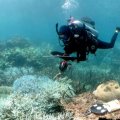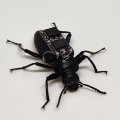More of Queensland’s future doctors are training and working in regional cities outside Brisbane, a new report has found.
While the number of overseas interns in the state has fallen, more Queensland medical students are choosing Rockhampton and Toowoomba for their internships, instead of being balloted.
The trends are revealed in a report by University of Queensland medical trainers, published in the international electronic journal Rural and Remote Health.
It says UQ's Rural Clinical Schools (RCS) are having a positive impact on the intern workforce in regional hospitals associated with the schools.
RCSs were built across Australia in 2001 under a Federal Government push to bring more Australian doctors back to the bush.
Queensland has two RCSs, run by UQ in Rockhampton and Toowoomba, with students also studying in Hervey Bay and Bundaberg.
The report, the first evaluation of RCSs impact on intern numbers, found intern first preferences in Rockhampton increased from six in 2001 to 10 in 2005 and in Toowoomba from five in 2002 to 12 in 2005.
In 2001, Rockhampton had two overseas interns and three from interstate in 2002, but UQ provided all interns in 2004 and this year.
In Toowoomba, UQ provided an extra 12/13 interns last year and 13/14 this year.
“Increasing the number of rural interns is important because there is evidence that they are more likely subsequently to become rural general practitioners,” the report concluded.
“It is early, because we’ve only got a couple of years of data, but it’s encouraging that there is a positive sign,” lead researcher Professor David Wilkinson said.
Professor Wilkinson, Deputy Head of UQ’s School of Medicine, co-authored the report with Associate Professors Llew Davies and Peter Baker, both from UQ’s Rural Clinical Division.
They compared data from 2001-05 such as first preferences and sources of interns between Rockhampton, Toowoomba and Mackay, which had no clinical school.
Some rural students still return to Brisbane seeking a breadth of experience but figures will show there is no academic advantage.
Professor Wilkinson has compiled the academic and clinical results of students from Brisbane and regional centres in a range of disciplines.
He said he found “absolutely the same performance”.
It is a government requirement that 25 percent of UQ’s medical students spend 50 percent of their time training in rural and remote areas.
This means some UQ students will spend their third year of training doing hands-on medical work in regional hospitals and in general practice.
Media: contact Professor Wilkinson (phone: 07 3365 5450, 0419 866 149, david.wilkinson@uq.edu.au) or Miguel Holland at UQ Communications (phone: 3365 2619, email: m.holland@uq.edu.au)
.jpg)


